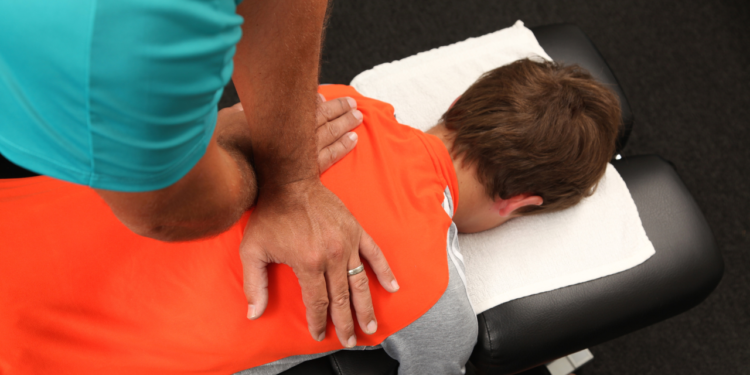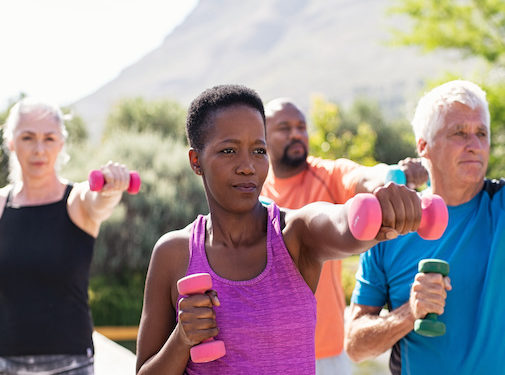From sitcoms to movie depictions, the chiropractic profession has certainly earned its ‘good sport’ award as we’ve watched actors enact what they believe to be a re-creation of a chiropractic adjustment accompanied by a very loud series of noises.
In reality, though, one of the most commonly asked questions in a chiropractic office is “What is that sound?” Patients are often inquisitive about the ‘popping’ and ‘cracking’ sounds and different types of chiropractic adjustments that can be utilized.
Many patients have visualized that chiropractic care is ‘one thing’ and done only one way. They may expect back-wrenching positions like they see with sitcom stereotypes. They may expect loud noises. They may think that just anyone can provide an adjustment. These notions, however, are far removed from the actual patient experience in a chiropractic office.
The Science Behind the Sound
Doctors of chiropractic (DCs) adjust diarthrodial joints. These are freely moveable joints created by two bones surrounded by a joint capsule. The capsule is filled with a lubricant called synovial fluid. Synovial fluid also serves as a source of nutrients for the cells that maintain the joint cartilage. Within its contents, synovial fluid also contains dissolved gases of oxygen, nitrogen and carbon dioxide.
Facet joints (also called zygapophyseal joints) are synovial joints that are found between vertebral bones along the length of the spine, on both sides and at the top and bottom of each vertebral segment. They allow for the variety of bending, arching and twisting motions that come from our spine. Facet joints are the most common joint type adjusted in the chiropractic office.
The formal term for noise when moving a joint is ‘joint cavitation.’ When a joint capsule is stretched to a point of resistance, it creates pressure within the fluid that causes the exchange of dissolved gases. Recent studies indicate that the process may actually create a cavity within the capsule fluid allowing this to happen.
DCs will often explain this to first-time patients so they are not alarmed. It’s important for patients to know that their bones are not literally ‘cracking.’
Patients may ask questions such as:
- Is the sound from bones grinding together?
- Is the popping sound causing damage?
- There was no sound, did the adjustment happen?
- Can I safely adjust myself or have a friend do it?
As we just described, the sound itself is not bones rubbing together. The sound certainly does not indicate damage or we wouldn’t adjust people. The presence of a noise, or lack of it, in no way indicates the success of an adjustment, it is normal and expected should it occur; and lastly, only a trained provider should attempt the procedures.
Types of Adjustments
Despite common lingo about ‘back-cracking,’ chiropractors do not ‘crack’ the spine. A chiropractic adjustment is a safe, controlled force applied to a joint/joints to restore proper function and mobility.
Adjustments provided by DCs are very precise corrections that address the way a joint has shifted. Unlike popping your knuckles to simply make a noise, DCs examine and palpate the spine to determine the exact joints involved and the x-y-z axis (three-dimensional space) of how they have moved out of alignment. They are then able to issue a gentle controlled adjustment with a precise line of drive applied to the particular joints that are involved.
Chiropractic is not limited to only the spine. DCs also understand the complex anatomy associated with the joints of the extremities: shoulder, elbow, hand, hips, knees and feet. They are specifically trained to evaluate and adjust all areas of the human skeleton.
To accomplish this goal, there are a wide variety of effective techniques that DCs learn and implement. These include popular hands-on techniques or may utilize special tables with pieces that drop away, and/or instruments. Though joint noise does often occur, different types of adjustments will have different levels of cavitation. Many methods will not have any noise at all but they are as equally as effective in correcting joint alignment. There are many named techniques out there, and your DC will pick one or a combination that they feel is best suited to your individual needs. A broad overview and explanation of what you might experience are given here:
Hands-on Techniques: There are a variety of techniques that go by different names to delineate different hands-on manual adjustment methodologies. With some of them, you may lay on a table, with others you may sit in a chair or use a piece of equipment designed for the low back. Your body will be positioned according to what joints are being addressed and which method is being utilized. With these techniques you may be more apt to hear a cavitation noise, however, it is also not unusual for a bone to silently slip into place during the procedure.
Special Tables: For certain techniques, special tables may be indicated. Some chiropractic tables will maneuver patients from a standing position, and lower them to a position lying face down. These tables are to maintain the weight-bearing position that a patient had standing, and also to make it more convenient for patients that may have trouble maneuvering positions.
Some tables may have moving pieces that the DC will use to facilitate the adjustment. These require less body positioning. Patients will hear the sound of the moving pieces during the adjustment and may feel a slight shift in the position of a table piece. Other tables may have features that move to provide traction and/or bend to address specific spinal joints or spinal areas.
Instruments: Small hand-held instruments are used by many DCs. They are spring-loaded mechanisms and provide rapid low-force impulses to targeted areas. The goal is to issue rapid impulses in the direction of correction before the muscles have a chance to tense up. The impulses can be calibrated to be extremely light or heavier depending on the patient and region or joint being addressed. Instrument adjusting is less likely to result in cavitation.
Care vs. Comedy
A diarthrodial joint provides the ability for movement but it also limits movement to prevent injury. It isn’t difficult to pop a knuckle and stretch a joint capsule to make a noise, but a well-meaning friend trying to pop your spine (like on a sitcom) could actually over-stretch the capsule or move joints in the wrong direction and cause more harm. This is why only trained professionals should ever attempt to adjust your spine and extremities.
When care is implemented by a trained provider, such as a DC, specific adjusting affords multiple benefits including:
- The restoration of optimal range of motion.
- The normalization of local nerve function (or even vascular function) for those structures that might be directly impacted.
- The relaxation of muscles adjacent to the joint as they are able to stop ‘protecting’ the joint through spasm and resume their natural position.
- A decrease in inflammation when the stress on the joint capsule is resolved.
- A decrease in pain through the release of endorphins at the region of care.
As we get joints moving, a chiropractic adjustment is multifold and holds the advantage of not only properly optimizing joint function but also providing patients relief from the many symptoms associated with it.



